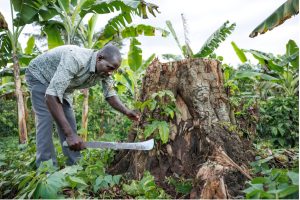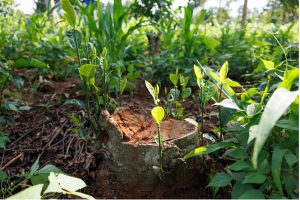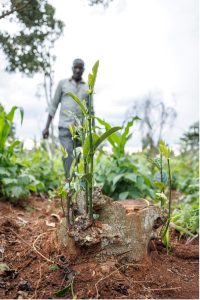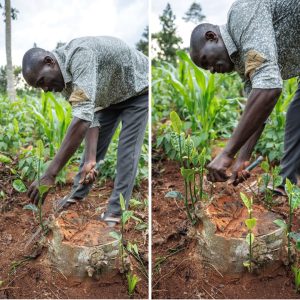Farmer-Managed Natural Regeneration (FMNR) is a valuable and cost-effective tool in the fight against climate change. This land restoration technique involves farmers selectively pruning and protecting the natural regrowth of trees and shrubs on their land, which enhances soil fertility, water retention, and carbon sequestration.
By integrating FMNR practices, carbon is captured and stored in the growing biomass of trees and vegetation, offering a low-cost method to offset carbon emissions. Additionally, the restored vegetation helps combat soil erosion and contributes to increased biodiversity. On top of this, FMNR leads to increased productivity and provides additional income sources.
The simplicity, accessibility and affordability of FMNR make it particularly beneficial for farmers, empowering them to play a vital role in climate change mitigation while simultaneously promoting sustainable land management practices and improving their livelihoods.
How to Implement FMNR
- Use existing resources: Often the tree is already there, but it is underground, and we simply need to give it a chance to get established (i.e., FMNR does not have to depend on tree planting)
- Prune and thin: Selective pruning and thinning of this regrowth is beneficial for the growth and the form (shape) of the trees. Correct pruning stimulates rapid growth and results in taller, straighter, more useful tree trunks being formed.
- Engage the community: Engaging the entire community in FMNR efforts can lead to greater success and sustainability. This requires agreement to a set of rules developed by the stakeholders themselves.
In short, FMNR is a simple, cost-effective way for farmers to fight climate change. By letting trees and shrubs grow naturally, FMNR captures carbon, prevents soil erosion, and boosts biodiversity. It’s an accessible approach that empowers farmers, making a significant impact in the broader effort to tackle climate change.



